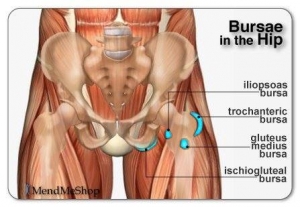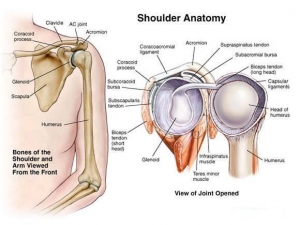ESWT – Extracorporeal Shockwave Therapy
Extracorporeal Shockwave Therapy (ESWT) is a medical treatment used to treat difficult areas of the body with tendinitis, tendinopathy’s, ligament and bursitis pain.
All of these conditions treated with conventional hands on therapy and rehabilitation will only help the symptoms and not treat the cause.
Finally there is a treatment that actually works on the cause and the good news is that it can be treated in 3/4 treatments instead of months of different treatments and rest. Shockwave Therapy can get you back to your sport/functional life in no time.
“Radial Pressure Waves is an excellent non invasive treatment method with very few side effects for indications that are normally very difficult to treat. For these indications we now know that RPW is a treatment method that reduces pain as well as improves function and quality of life.”
Extracorporeal Shockwave Therapy Works Best On
- Tennis Elbow – Lateral Epicondylitis
- Golfer’s Elbow – Medial Epicondylitis
- Triceps Tendinitis/Tendinosis
- Plantar Fasciitis/Heel Spur
- Rotator Cuff Tendinitis/Tendinosis
- Bursitis of the shoulder
- Achilles Tendinitis / Tendinosis
- Patellar Tendinitis / Tendinosis
- Bursitis of the hip
- Calcifying tendonitis of the shoulder
- Helping Bones heal after a break or surgery
About the Treatment
Shockwave Therapy treatment is usually given in three-four sessions, generally spread out over the first 2 weeks, then another three weeks and then a further three weeks.
Many patients will notice that their condition markedly improves after one treatment. Others may not improve until several days after their last treatment. In all cases, it is important to complete the full course of treatments to see the best results. We also look at the reason as to why you have your condition and if needs be add correction to your lifestyle/sport.
Most patients will notice reddened skin at the treatment site. Some will have a few small pinpoint bleeding sites on the skin. These should resolve within a few days after the final treatment.
Within the first 24/48hours most people receive an cooling to the area. It is advised to not train within this time frame to allow the treatment to have its best results but normal active may resume after this. That is the beauty of this treatment active can still be done.
Frequently Asked Questions
- The radial pressure waves (in physical terms this is the correct definition) are pulses generally generated by compressed air.
- The compressed air is used to drive a projectile in a cylinder inside the hand piece to a shock transmitter.
- The kinetic energy generating from the motion and weight of the projectile, converts into acoustic energy when the projectile hits the shock transmitter. The acoustic pulses then transmit into the underlying tissue, treating a larger area.
-
No operations
-
No anesthesia
-
Session will last about 30 minutes.
-
Back to excercise quicker
-
Very little rest
-
3-4 treatments and results are seen.
-
No waiting on long waitin lists for appointments
-
Non complicated back to excersie rehab.
-
Report to the treatment area at the assigned time. No special preparation is necessary
-
You may eat and drink normally
-
You will be put in a relaxing position during a treatment session
-
We will localise the painful points by palpation and sometimes mark up the points with a felt tip pen
-
Ultra sound gel will be applied on the skin in the treatment area
-
A treatment with Radial Pressure Waves requires a hand piece with a transmitter tip especially designed for the treatment
-
The transmitter point on the hand piece will be placed at the pain point or on the surrounding muscles
-
You will then hear the sound created by the projectile hitting the transmitter during the treatment.
-
We will work on the surrounding area marked and discussed for approximately 6 minutes, and we will be checking in with you through out the treatment.
- Once the treatment is completed you will be free to go on about your daily rountine once discussed with your therapist
Radial Shockwave Therapy
Runners Knee
Plantar Fasciitis
An In-Depth Look at Some Conditions Treated by Shockwave Therapy
Tennis Elbow & Golfers Elbow
“Lateral Epicondylitis”(ep”i-kon”di-li’tis) is the most common form of tennis elbow, and is mostly caused by overstress of the muscle attachement to the bone at the outside of the elbow. Another variant of tennis elbow is “Posterior Epicondylitis”, where the attachment to the back of the elbow is the site of pain.
Golfer’s elbow or “Medial Epicondylitis” occurs when the attachment of the flexor muscles of the forearm is overstressed at the inside of the elbow. Repetitive throwing activities, racquet sports, and golf are particularly likely to cause such problems.
Heel Spur & Planter Fasciitis
Heel spur is technically a “medial subcalcaneal exostosis at the inner tubercle of the os calcis” This means a protuberance of the heel bone where it attaches to the plantar fascia (see x-ray illustration).If this finding is present with pain overlying the area of the spur, the patient is said to have “heel spur syndrome”. Since the plantar fascia connects to the heel spur, it is clear why “plantar fasciitis” and “heel spur” are often used interchangeably.
Those who spend a great deal of their time on their feet are likely to develop these conditions. Being overweight can aggravate the condition. Overstress walking, running, or jumping, especially on hard surfaces, and activities such as aerobics, stair climbing, hiking, volleyball, basketball and tennis, often lead to plantar fasciitis. A heel spur is present
Hip Bursitis, Tendinitis & Tendinosis
There are many bursal sacs in the groin and pelvic area and inflammation (“bursitis”) may occur from overuse, infection, or other systemic problems. The trochanteric bursa is a common site for inflammation. Pain arising from this source may radiate up and down the thigh. In the more common (repetitive stress) type, there is localized tenderness over the trochanter (top of the femur/leg bone). Tendinitis/Tendinosis and bursitis in this area can also occur after trauma.
Frozen Shoulder/Bursitis & Impingement Syndrome
Biceps tendinitis/tendinosis is inflammation of the tendon arising from the biceps muscle. Rotator cuff tendinitis/tendinosis is inflammation of the collection of tendons, muscles and ligaments around the shoulder joint. Usually the bursae, which are adjacent to these structures, also become inflamed. If the rotator cuff and bursa are irritated, inflamed, and swollen, then they may become squeezed between the head of the humerus and the acromion, a bony protrusion of the scapula. This is termed “Impingement Syndrome”









